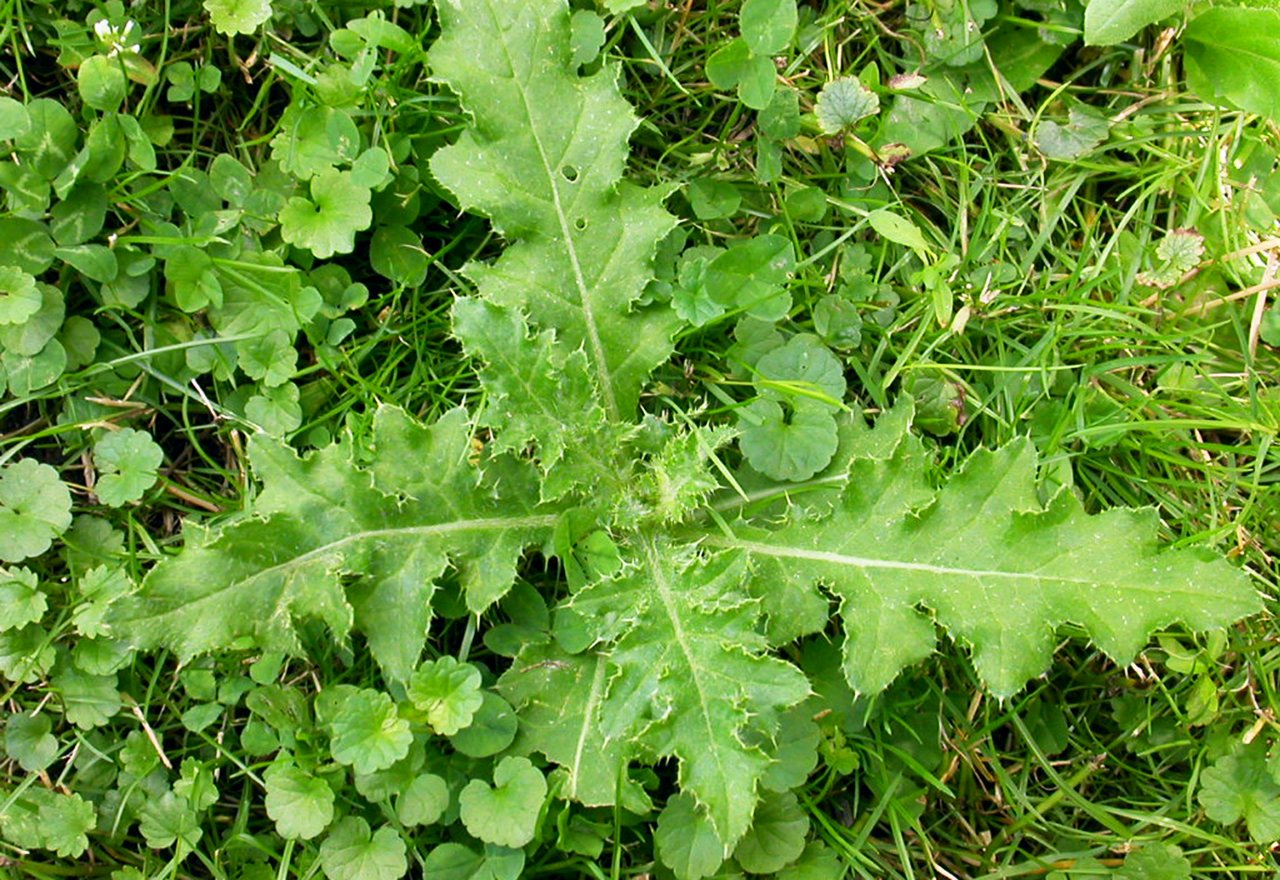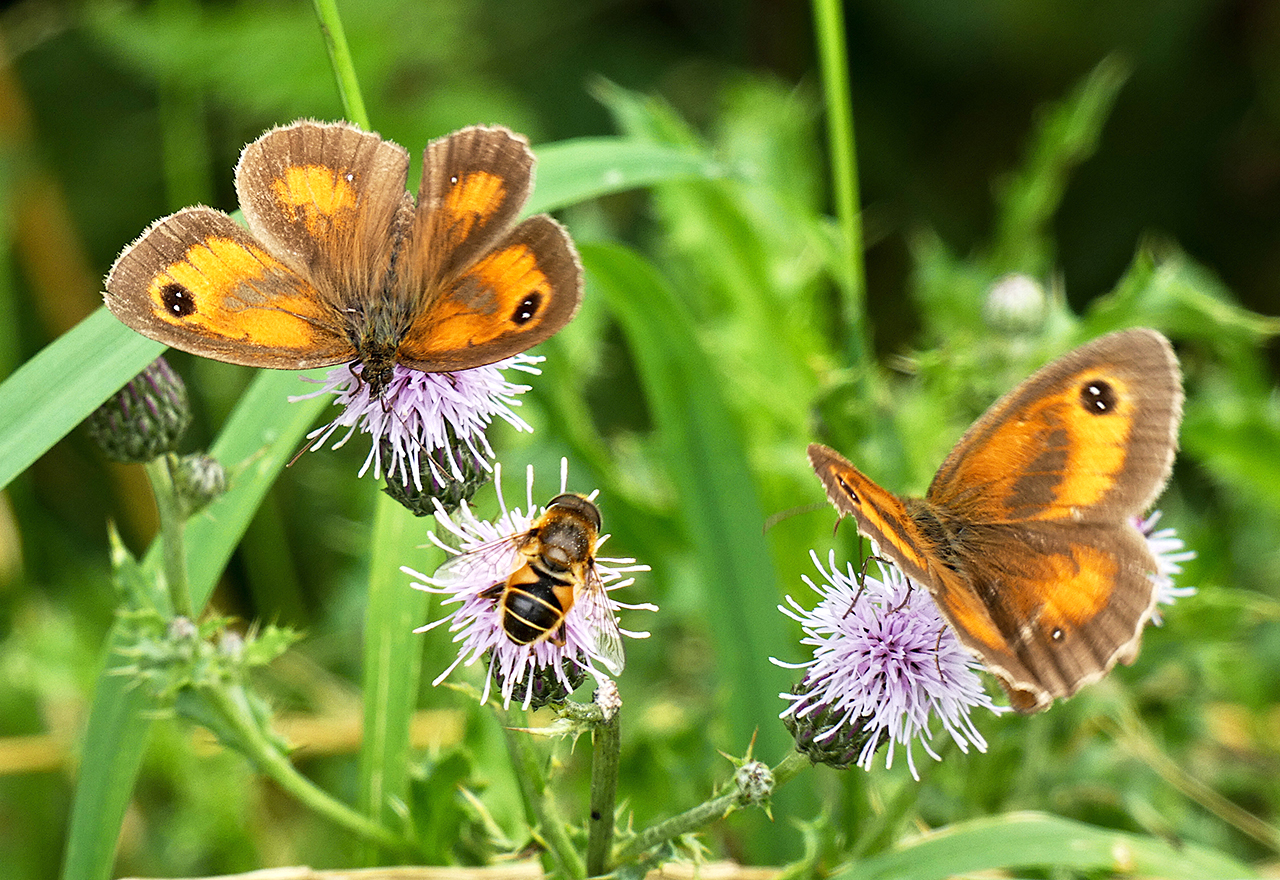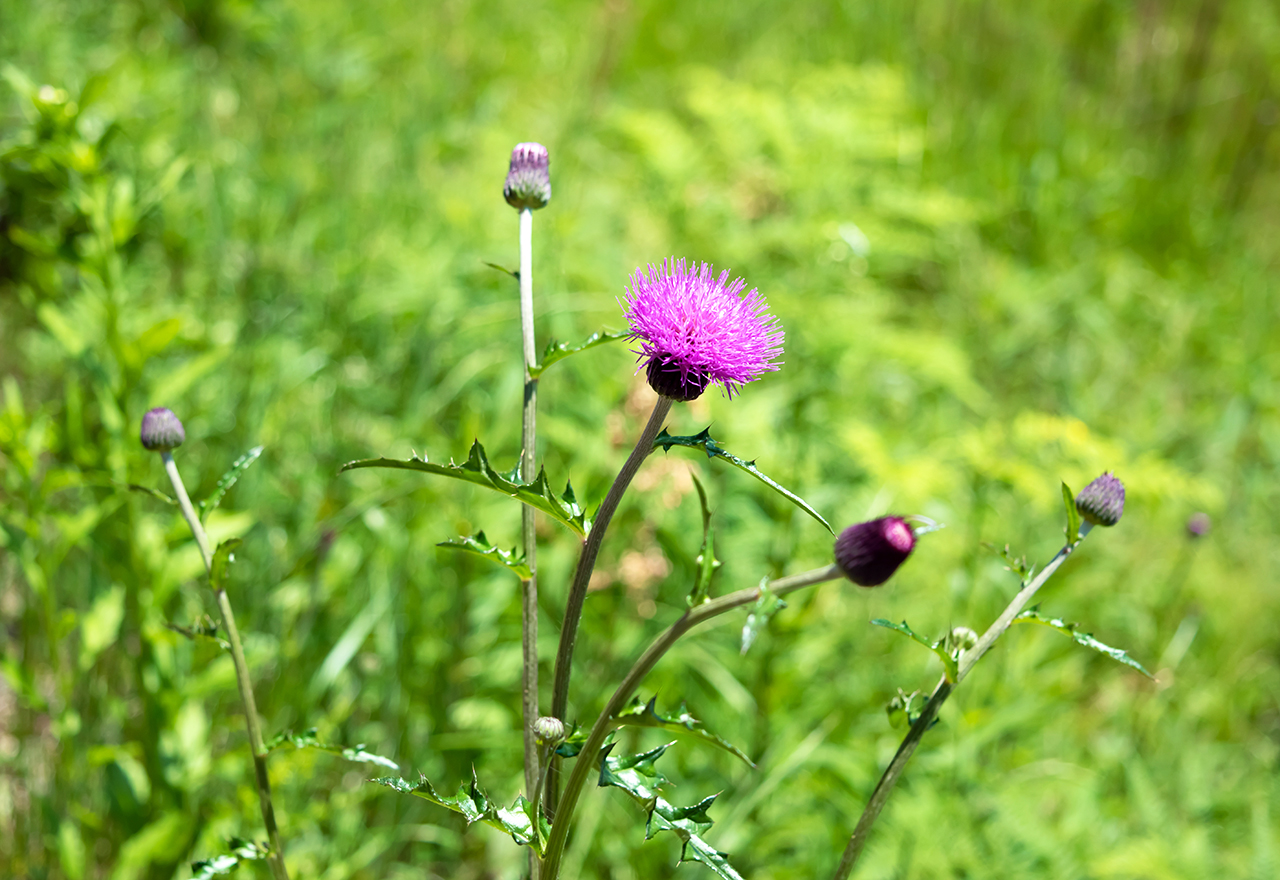A Fast-Spreading, Difficult-to-Control Perennial Plant with Prickly Leaves

The term Thistle is used for a variety of wildflowers and weeds, mostly part of the sunflower family. Generally, Thistle leaves have sharp prickles along the edges of their leaves and along their stems to act as a defense against grazing wildlife. All varieties produce flowers, usually purple or yellow, and spread through seed. In the Fall, the flowers frequently produce puffy, white fluff attached to the seeds to ride the wind and spread seeds farther. Some varieties do also spread through rhizomes. All varieties have deep roots, often taproots that can grow multiple feet underground. The plant itself can grow up to six feet tall. Thistles are found in nearly all eastern States in the US as well as Quebec to Manitoba in Canada.
In Ohio and Indiana, Thistles can be fast-spreading and difficult to control weed. While birds and butterflies may like it, people walking barefoot through a lawn generally find its prickly leaves to be painful.
Thistles thrive in dry soil without a lot of nutrients in full sun. They tend to grow in the least tended part of properties and especially in fields and prairies.
We recommend being diligent about removing the weed, by plucking it as frequently as you find it. Use heavy gloves and pull the weed at the base of the stem. If you are pulling weeds right after a rain, Thistles will be easy to eradicate. We also recommend Weed Out, a weed-pulling tool that can be very helpful during drier weather. You might even try filling the hole left behind with Burnout, an organic weed and grass killer, to try to kill the root a little more effectively. If this weed has really taken hold in your property, a spot chemical weed control spray in the Fall or Spring will work best. We’ve also had good results directly injecting an organic weed killer into Thistles with a syringe. While this method is a bit unorthodox, and maybe a bit more time-intensive, it really gets the job done!
The most common variety of Thistle we see is Canada Thistle. Canada Thistle has a deep and extensive root system that is difficult to eliminate. Your best bet for preventing Canada Thistle is to continually remove or treat what you see to prevent it from getting energy from the sun and spreading by seed. In addition, feed your soil and grass to keep it healthy and competitive with the Thistle! We strongly advocate for mowing high every time, three to four inches, so that your grass will grow deeper roots. Only give your grass an inch of water per week and only water once a week. We recommend Good Nature Earth Turf Spring, our natural fertilizer, which will help achieve lawn thickness. Our general Ohio and Indiana recommendation for lawn grass is a mix of 5% Microclover, 90% Turf Type Tall Fescue, and 5% Kentucky Bluegrass for our region of the United States. We sell a premade mix: our Tuff Turf Lawn Seed provides the Turf Type Tall Fescue and Kentucky Bluegrass and we also sell bags of Microclover. You can Slice Seed this mixture of grass into your existing lawn where you have thinner patches.
Good Nature can provide a few rounds of our Natural Weed Buster applications each season on your lawn to help provide extra Thistle suppression, always without chemicals to protect the health of your kids, your pets, and your local waterways.

Thistles are important to wildlife. Their large, showy flowers are frequently covered in pollinators – bumble bees, honey bees, and butterflies all flock to Thistle flowers. Their plentiful nectar and pollen are an important food source for these insects. In the Fall, the plants offer a different food source for birds, especially chickadees and finches, in the form of their black seeds. In fact, almost all bags of mixed birdseed contain Thistle seeds and you can also purchase entire bags of only Thistle seeds. Additionally, the fluff that the seeds ride the wind on is harvested for birds to make their nests warmer over the Winter. So consider allowing a few Thistles on the edges of your yard where no one will step on them!
Thistles are not poisonous and some foragers do harvest Thistles since all parts of the plant are edible. The interior of the unbloomed flower is said to be most tasty (like an artichoke) and the “mid-rib” of the leaves and the stems can be sautéed, stewed in soups, or eaten raw in salads (after chopping off the spines, of course). Thistles are frequently used in “Milk Thistle Teas” which are touted to help joint issues, liver detoxing, and also to treat allergies.
